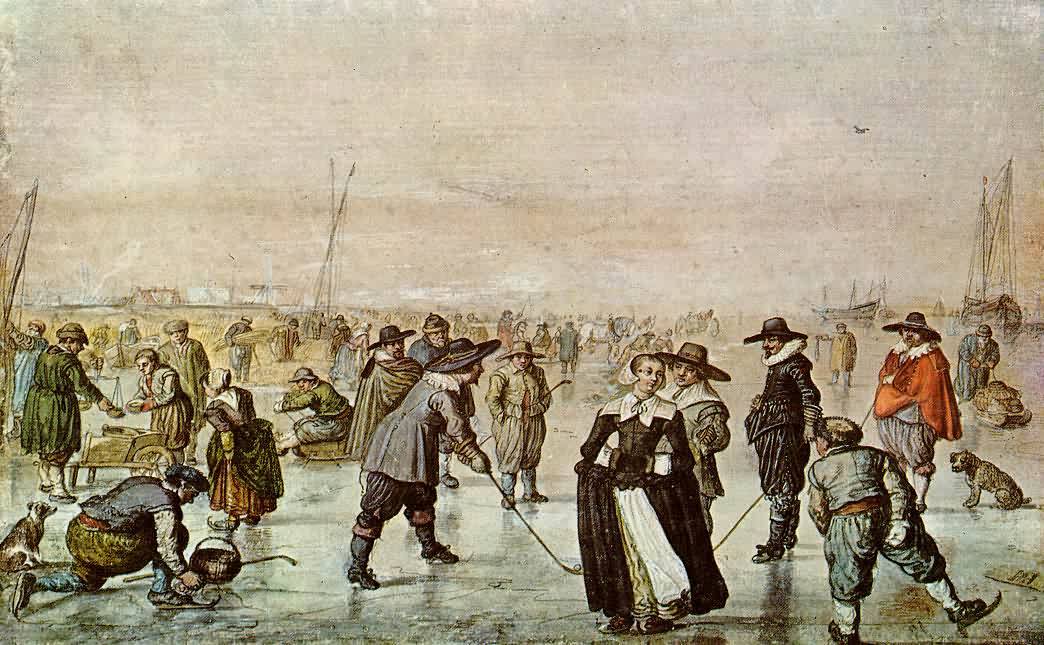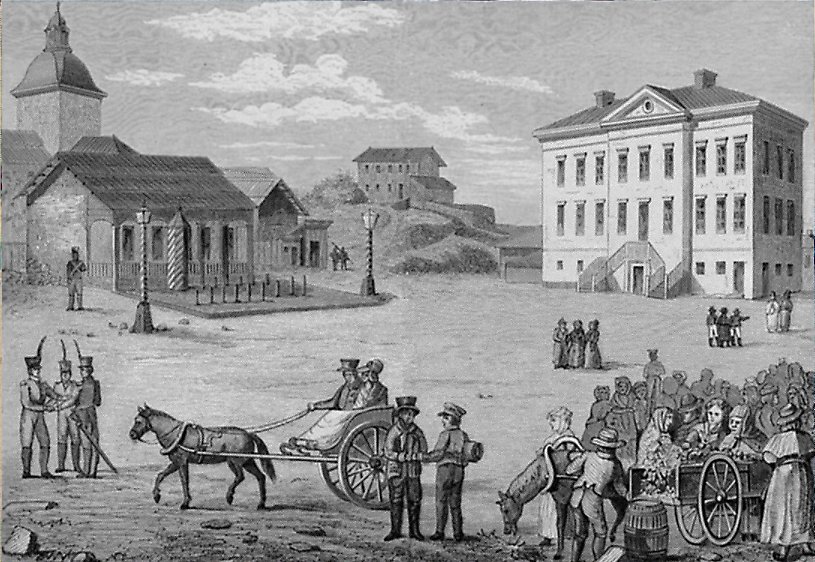|
Helsinki Railway Square
Helsinki Railway Square ( fi, Rautatientori, sv, Järnvägstorget) is an open square immediately to the east of the Helsinki Central railway station in central Helsinki in Finland. The square serves as Helsinki's secondary bus station along with the main Kamppi Center bus station. The north side features the Finnish National Theatre, and the south side is formed of the Ateneum classical art museum (part of the Finnish National Gallery). To the west side are the two ornate entrances to Helsinki Central station—a bigger one for public use, and a smaller one exclusively for the President of Finland and their official guests. The square is served by the Helsinki Metro system with Rautatientori metro station entrances at the south-west corner, and University of Helsinki metro station to the east. During summer afternoons and evenings, the pub tram Spårakoff departs from the ' tram stop in the square once per hour. Rautatientori gallery File:Finnish National Theatre.jpg, ... [...More Info...] [...Related Items...] OR: [Wikipedia] [Google] [Baidu] |
Helsinki Central Railway Station
Helsinki Central Station ( fi, Helsingin päärautatieasema, sv, Helsingfors centralstation) ( HEC) is the main station for commuter rail and long-distance trains departing from Helsinki, Finland. The station is used by approximately 400,000 people per day, of whom about 200,000 are passengers. It serves as the terminus for all trains in the Helsinki commuter rail network, as well as for all Helsinki-bound long-distance trains in Finland. The Rautatientori (Central Railway Station) metro station is located in the same building. All trains from Finland to Saint Petersburg and Moscow in Russia also depart from Helsinki Central Station. The railway tracks in Helsinki were built in the 1860s. The station building, clad in granite, was designed by Eliel Saarinen and inaugurated in 1919. The building is known for its clock tower and the '' Lyhdynkantajat'' ("The Lantern Bearers") statues by Emil Wikström. Helsinki Central was chosen as one of the world's most beautiful railway stati ... [...More Info...] [...Related Items...] OR: [Wikipedia] [Google] [Baidu] |
Eliel Square
The Eliel Square ( fi, Elielinaukio, sv, Elielplatsen) is a square on the west side of the Helsinki Central Station in the heart of Helsinki, Finland. It is named after the railway station designer Eliel Saarinen. The square is for the most part the departure and arrival platforms for regional buses. At the northern end of the square is the Holiday Inn Hotel and at the southern end is the restaurant Vltava. On the west side are the and Sanomatalo. History On the site of the square used to be a small railway yard, an express luggage wing, which served as a kind of wholesale arrangement area. After its demolition, the area was used as a parking space. The new town plan south of Töölönlahti was completed in 1996, and it also included the Eliel Square. The area then passed into city ownership in accordance with an agreement between the city and the country. New Eliel The New Eliel ( fi, Uusi Eliel; sv, Nya Eliel) is a project launched in 2017, in which the square will be d ... [...More Info...] [...Related Items...] OR: [Wikipedia] [Google] [Baidu] |
Ice Skating
Ice skating is the self-propulsion and gliding of a person across an ice surface, using metal-bladed ice skates. People skate for various reasons, including recreation (fun), exercise, competitive sports, and commuting. Ice skating may be performed on naturally frozen bodies of water, such as ponds, lakes, canals, and rivers, and on man-made ice surfaces both indoors and outdoors. Natural ice surfaces used by skaters can accommodate a variety of winter sports which generally require an enclosed area, but are also used by skaters who need ice tracks and trails for distance skating and speed skating. Man-made ice surfaces include ice rinks, ice hockey rinks, bandy fields, ice tracks required for the sport of ice cross downhill, and arenas. Various formal sports involving ice skating have emerged since the 19th century. Ice hockey, bandy, rinkball, and ringette, are team sports played with, respectively, a flat sliding puck, a ball, and a rubber ring. Synchronized skating ... [...More Info...] [...Related Items...] OR: [Wikipedia] [Google] [Baidu] |
Vantaa
Vantaa (; sv, Vanda, ) is a city and Municipalities of Finland, municipality in Finland. It is part of the inner core of the Greater Helsinki, Finnish Capital Region along with Helsinki, Espoo, and Kauniainen. With a population of (), Vantaa is the fourth most populated city in Finland after Helsinki, Espoo and Tampere. Its administrative center is the Tikkurila Districts of Vantaa, district. Vantaa is bordered by Helsinki, the Finnish capital, to the south; Espoo to the southwest; Nurmijärvi to the northwest; Kerava and Tuusula to the north; and Sipoo to the east. The city encompasses , of which is water. Vantaa's significant attractions include the Vantaa River (''Vantaanjoki''), which flows through the city and flows into the Gulf of Finland. The largest airport in Finland, and the main airport and airline hub of Greater Helsinki, the Helsinki Airport, is located in Vantaa. Companies with headquarters in Vantaa include Finnair, Finavia, R-kioski, Tikkurila Oyj, Veikkaus, V ... [...More Info...] [...Related Items...] OR: [Wikipedia] [Google] [Baidu] |
University Of Helsinki Metro Station
The University of Helsinki metro station ( fi, Helsingin yliopiston metroasema, sv, Helsingfors universitets metrostation) is a station on the Helsinki Metro. It serves the University of Helsinki and surrounding areas in the central Helsinki districts Kaisaniemi and Kluuvi. From 1995 to 2015, the station's name was Kaisaniemi. The station is 27 metres below ground level and 22 metres below sea level. It is positioned 600 metres east of the Central Railway Station and 900 metres south of Hakaniemi. Both lines M1 and M2 serve the station. History The location of the metro station was decided in 1971, and the station box was excavated during the metro's original construction work in the late 1970s. The station's opening date was postponed due to a lack of funds. The station was eventually opened on the 1st of March 1995, having been designed by the architect firm ''Kontio - Kilpi - Valjento Oy''. The station is equipped with a glass-sided funicular-style elevator, operating alon ... [...More Info...] [...Related Items...] OR: [Wikipedia] [Google] [Baidu] |
Helsinki Metro
The Helsinki Metro ( fi, Helsingin metro, sv, Helsingfors metro) is a rapid transit system serving Greater Helsinki, Finland. It is the world's northernmost metro system. It was opened to the general public on 2 August 1982 after 27 years of planning. It is operated by Helsinki City Transport for HSL and carries 92.6 million passengers per year. The system consists of 2 lines, serving a total of 30 stations. It has a total length of . It is the predominant rail link between the suburbs of East Helsinki and the western suburbs in the city of Espoo and downtown Helsinki. The line passes under Helsinki Central Station, allowing passengers to transfer to and from the Helsinki commuter rail network, including trains on the Ring Rail Line to Helsinki Airport. History 1955–67: Light rail plan The initial motion for building a metropolitan railway system in Helsinki was made in September 1955, though during the five decades beforehand, the idea of a tunneled urban railway ... [...More Info...] [...Related Items...] OR: [Wikipedia] [Google] [Baidu] |
Helsinki
Helsinki ( or ; ; sv, Helsingfors, ) is the Capital city, capital, primate city, primate, and List of cities and towns in Finland, most populous city of Finland. Located on the shore of the Gulf of Finland, it is the seat of the region of Uusimaa in southern Finland, and has a population of . The Helsinki urban area, city's urban area has a population of , making it by far the List of urban areas in Finland by population, most populous urban area in Finland as well as the country's most important center for politics, education, finance, culture, and research; while Tampere in the Pirkanmaa region, located to the north from Helsinki, is the second largest urban area in Finland. Helsinki is located north of Tallinn, Estonia, east of Stockholm, Sweden, and west of Saint Petersburg, Russia. It has History of Helsinki, close historical ties with these three cities. Together with the cities of Espoo, Vantaa, and Kauniainen (and surrounding commuter towns, including the eastern ... [...More Info...] [...Related Items...] OR: [Wikipedia] [Google] [Baidu] |
President Of Finland
The president of the Republic of Finland ( fi, Suomen tasavallan presidentti; sv, Republiken Finlands president) is the head of state of Finland. Under the Constitution of Finland, executive power is vested in the Finnish Government and the president, with the latter possessing only residual powers. The president is directly elected by universal suffrage for a term of six years. Since 1994, no president may be elected for more than two consecutive terms. The president must be a Natural-born-citizen clause, natural-born Finnish citizen. The presidential office was established in the Constitution of Finland#Historical background and reform, Constitution Act of 1919. The incumbent president is Sauli Niinistö. He was elected for the first time in 2012 Finnish presidential election, 2012 and was re-elected in 2018 Finnish presidential election, 2018. Finland has, for most of Independence of Finland, its independence, had a semi-presidential system in which the president had much a ... [...More Info...] [...Related Items...] OR: [Wikipedia] [Google] [Baidu] |
Finnish National Gallery
Finnish National Gallery ( fi, Suomen Kansallisgalleria, sv, Finlands Nationalgalleri) is the largest art museum institution of Finland. It consists of the Ateneum, an art museum; Kiasma, a contemporary art museum; and the Sinebrychoff Art Museum, a historic house and art museum. The organization's functions are supported by the conservation department, the administration and services department and Kehys, the art museum development department. History On January 27, 1846, the Finnish Art Society was established. In 1848, it established the Helsinki Drawing School and in 1852, the organization took over Turku Drawing School. In the 19th-century, the organization's collections grew through donations. In 1893, , , and Karl Emanuel Jannsson made significant contributions to the organization. The Ateneum building was completed in the spring of 1887 and the Finnish Art Society's operations were moved there. In 1921, Paul and Fanny Sinebrychoff donated approximately 900 works t ... [...More Info...] [...Related Items...] OR: [Wikipedia] [Google] [Baidu] |




